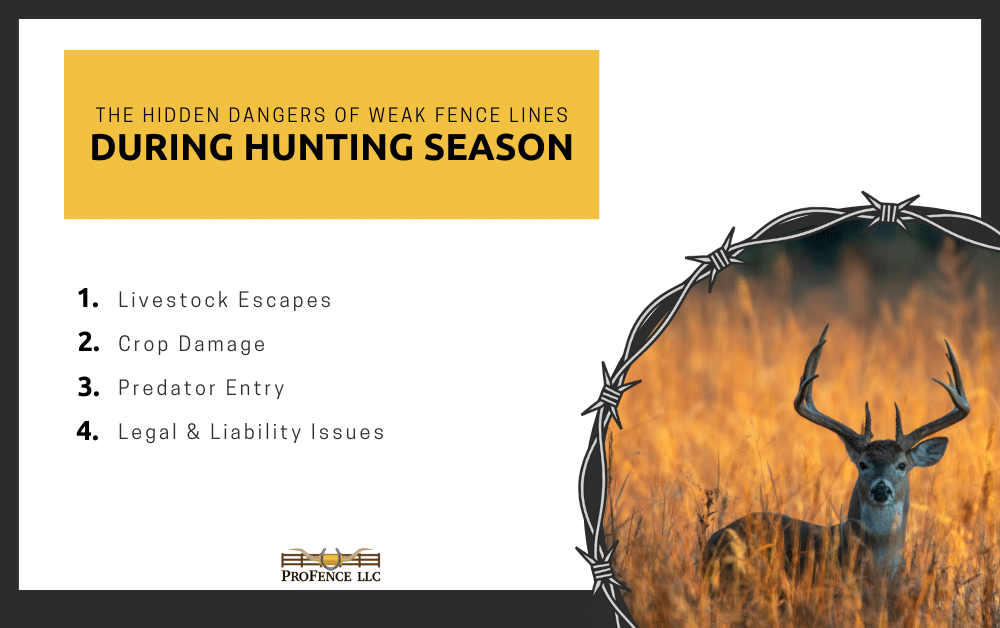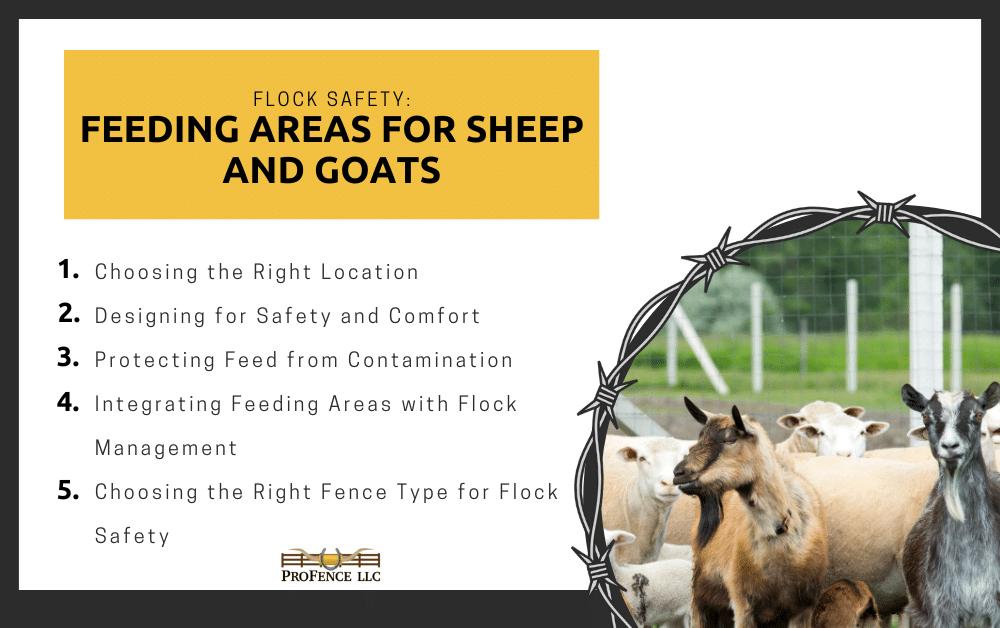Fall is one of the busiest and most beautiful times of year in the countryside. Fields are harvested, leaves are turning, and deer season is in full swing. While hunters see opportunity, farmers and landowners face unique challenges — particularly when it comes to protecting livestock and crops. One of the most overlooked risks during this season comes from weak fence lines. What might have been a minor issue in the summer can quickly become a major liability once hunting season begins. Increased wildlife movement, the noise of gunfire, and the possibility of trespassers all put added pressure on fence systems that may already be compromised.
The good news is that with proper maintenance and professional help, you can secure your property before problems arise. Let’s explore the hidden dangers of weak fence lines, why they matter more during hunting season, and how you can protect your farm, family, and animals.
The Consequences of Weak Fence Lines
When a fence line gives way, the problems extend far beyond the property itself.
Livestock Escapes
- Escaped animals can cause injuries, car accidents, or even fatalities if they wander onto roads.
- Recovery is stressful, time-consuming, and potentially dangerous.
- Lost livestock means direct financial losses for farmers.
Crop Damage
- Weak fences make it easier for deer and other wildlife to push into cornfields, orchards, and vineyards.
- Even a single night of intrusion can destroy weeks of hard work.
Predator Entry
- Coyotes, foxes, and stray dogs can exploit gaps in fences.
- Sheep, poultry, and young calves are especially vulnerable.
- Once predators find a weak spot, they tend to return again and again.
Legal & Liability Issues
- Farmers and property owners can be held responsible if escaped animals cause vehicle accidents or damage neighboring land.
- Insurance may not fully cover negligence caused by visibly weak fences.
Weak fence lines are not just a maintenance problem — they’re a safety, financial, and legal liability.
Common Causes of Weak Fence Lines
Not every weak spot in a fence is obvious at first glance. Many issues build up slowly over time.
- Rotten Posts: Moisture and soil contact weaken wood, creating instability.
- Rusty Wire or Loose Staples: Aging wire loses tension and pulls away from posts.
- Soil Erosion or Washouts: Heavy rains wash away soil around posts, creating soft spots.
- Improper Installation: Shallow post depth or poorly set concrete shortens fence life.
- Old Repairs That Didn’t Hold: Quick fixes may only mask the real issue.
Pro Tip: Fall is the perfect time to walk your fence lines and look closely for these issues before they become urgent problems.
How to Identify Weak Fence Lines Before Hunting Season
Prevention is always more cost-effective than repairs. Here’s how to spot problems before they escalate.
DIY Inspection Checklist
- Walk the entire fence line — check for leaning or broken posts.
- Push on posts at the base — if they wobble, rot may be present.
- Look for sagging wire — especially between corner posts.
- Check electric fences — test voltage and look for broken insulators.
- Scan for gaps at ground level — erosion often creates small openings that wildlife exploit.
Professional Inspection
While DIY inspections are helpful, a professional eye often spots issues that property owners miss. A ProFence expert can:
- Use specialized tools to test post stability.
- Measure tension in wire fencing.
- Identify hidden damage from past frost heave or erosion.
- Recommend the right materials for replacement.
Reinforcement & Replacement Solutions
Once you’ve identified weak spots, the next step is deciding whether to reinforce or replace.
Quick Fixes for Temporary Reinforcement
- Tightening wire with strainers.
- Adding brace posts in high-pressure areas.
- Driving temporary steel T-posts to support sagging lines.
Note: These fixes are temporary and won’t withstand a full season of deer pressure or winter storms.
Permanent Solutions
- Replacing rotten posts with treated or rot-resistant alternatives.
- Resetting posts to the correct depth to avoid frost heave.
- Rebuilding entire sections if multiple weak points exist.
- Installing proper braces at corners and gates.
Fence Types That Hold Up During Hunting Season
- Woven Wire Fencing: Excellent for deer resistance and livestock security.
- High Tensile with Electric Backing: Strong, long-lasting, and effective for cattle containment.
- Deer Fencing: Specialized height and design to keep deer out of orchards and vineyards.
Don’t Let Weak Fence Lines Catch You Off Guard
Hunting season is here, and with it comes more wildlife movement, noise, and stress on your fencing system. Weak fence lines that might survive summer won’t hold up when deer are running, livestock are spooked, and predators are looking for easy access.
By addressing weak points now, you’ll:
- Prevent costly livestock escapes.
- Protect crops from deer intrusion.
- Keep predators out of vulnerable areas.
- Avoid legal and liability issues.
- Save money compared to emergency winter repairs.
At ProFence, we know how critical strong fencing is during hunting season. Don’t wait until you’re chasing escaped cattle or repairing storm-damaged posts in the snow.







